Asymptomatic Plasmodium falciparum infections may not be shortened by acquired immunity
- PMID: 26238109
- PMCID: PMC4523025
- DOI: 10.1186/s12936-015-0813-1
Asymptomatic Plasmodium falciparum infections may not be shortened by acquired immunity
Abstract
Background: The duration of untreated Plasmodium falciparum infections is a defining characteristic of the parasite's biology. It is not clear whether naturally acquired immunity (NAI) can shorten infections, despite the potential implications for malaria control and elimination as well as for basic research.
Methods: Data on the presence of P. falciparum msp2 genotypes in six blood samples collected over one year was analysed, together with four samples collected over 1 week, from a cohort in Navrongo (Ghana). Mathematical models assuming either exponential, Weibull, gamma, or log-normal infection durations were estimated separately for six age-groups. The method allowed for varying clonal acquisition and detection rates.
Results: The best fitting (Weibull) mean durations were 124 days (children <5 years old), 179 days (5-9 years), and 70-90 days (>10 years). This non-monotonic age pattern is not suggestive of an infection-clearing effect of NAI since immunity increases with exposure, and thus, age. Age-related differences in innate immunity are a more plausible explanation. 21% of blood-stage infections terminated within 1 week, in stark contrast to months of persistence in infections induced in neuro-syphilis patients (malariatherapy data). Age independence in this percentage raises the possibility that this clearance may result from innate mechanisms or genetic incompatibility between hosts and parasites, rather than from NAI.
Conclusion: In all ages of hosts a substantial proportion of infections are cleared in the first days or weeks of appearance in the blood, while others persist for many months. Although cumulative exposure and NAI increase with age, this does apparently not translate into an increased rate of termination of infections.
Figures
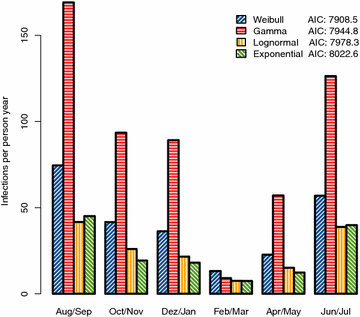
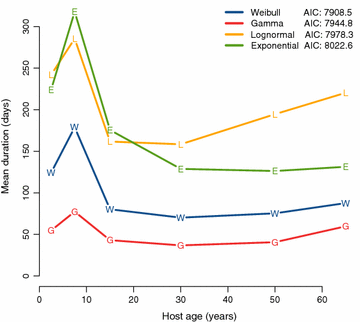
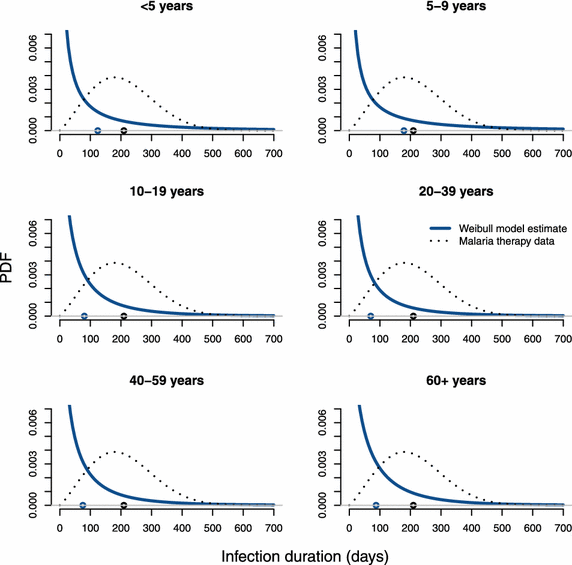
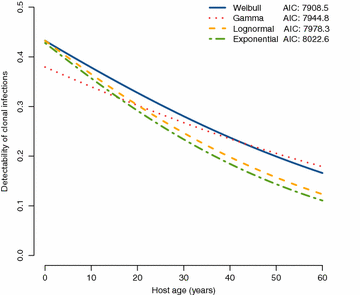
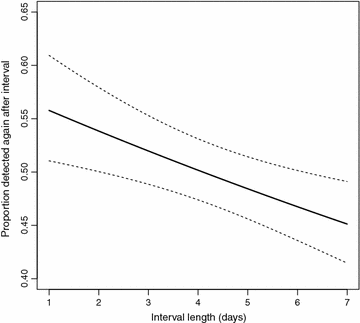
References
-
- WHO (2013) World Malaria Report. http://www.who.int/malaria/publications/world_malaria_report_2013/en/. Accessed 31 July 2015
Publication types
MeSH terms
Grants and funding
LinkOut - more resources
Full Text Sources
Other Literature Sources

